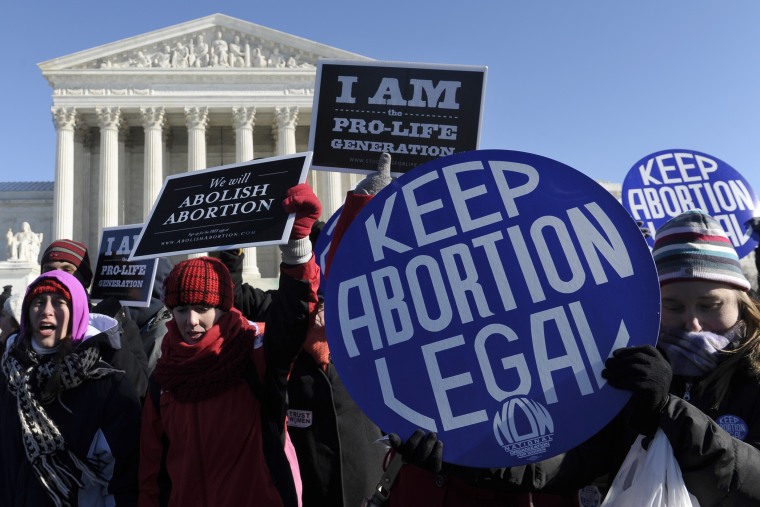In 2007, policymakers in Massachusetts created a "buffer zone" around health clinics that provide abortion services. Protestors who want to hold demonstrations at these facilities can do so, the law concluded, but to protect the safety of patients and employees, anti-abortion activists had to remain at least 35 feet away.
Protestors, not surprisingly, filed suit, claiming they have a First Amendment right to "engage" women entering and leaving health clinics. They also argued that a 35-foot buffer is excessive.
As Irin Carmon reported, a unanimous Supreme Court agreed.
In a unanimous opinion, the Supreme Court struck down a Massachusetts law Thursday that set a 35-foot buffer zone around abortion clinics, saying it violates the First Amendment. Massachusetts had argued that the buffer zone, which anti-abortion protesters said violated their speech rights, keeps patients and clinic staff safer. "The buffer zones burden substantially more speech than necessary to achieve the Commonwealth's asserted interests," the court's decision read.
The entirety of the ruling is online here (pdf). Chief Justice John Roberts wrote the opinion.
As Irin's report noted, there can be no doubt that buffer zones are effective: "According to a survey of members of the National Abortion Federation, 51% of facilities with a buffer zone said they saw criminal activity drop after it was put in place. Three quarters said it had 'improved patient and staff access to the facilities.' In the same survey, 92% of facilities said they are concerned about their patients' safety approaching the facility, said the group's president, Vicki Saporta."
But at the high court, efficacy apparently wasn't a concern.
It's worth noting that the ruling could have been much worse for abortion-rights proponents. Over a decade ago, in a case called Hill v. Colorado, a Supreme Court majority held that a Colorado law limiting protests outside all health care facilities does not necessarily infringe on Americans' free-speech rights. That law created a 100-foot buffer around medical offices and an 8-foot buffer around patients.
Today, Justice Antonin Scalia said today that Hill should now be overturned. The court majority didn't go that far, but it also didn't add much clarity to where the Hill precedent now stands.
Cecile Richards, president of Planned Parenthood Federation of America , said in a statement, "This decision shows a troubling level of disregard for American women, who should be able to make carefully considered, private medical decisions without running a gauntlet of harassing and threatening protesters. We are taking a close look at this ruling, as well as patient protection laws around the country, to ensure that women can continue to make their own health care decisions without fear of harassment or intimidation.”
Martha “Marty” Walz, president and CEO of Planned Parenthood League of Massachusetts, added, “Today’s ruling isn’t the end of the story -- it can’t be."
Disclosure: My wife works for Planned Parenthood, but played no role in this report and had no role in this legal dispute.
